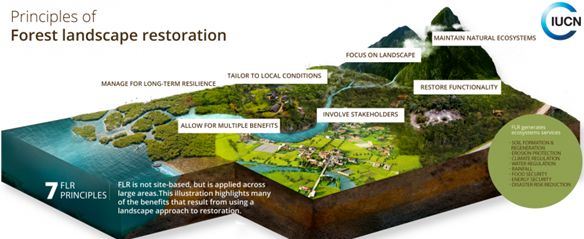

17th May 2022 (6 Topics)
Context
According to the recently adopted Seoul Declaration, the investment in forest and landscape restoration globally must be tripled by 2030 to implement global commitments and meet internationally agreed goals and targets.
About
World Forestry Congress:
- The World Forestry Congress is held approximately once every six years.
- The first Congress was held in Italy in 1926.
- FAO has helped host countries organize the Congress since 1954.
- Responsibility for the organization and financing of each Congress lies with the host country.
- The Congress is a forum for the exchange of views and experiences on all aspects of forests and forestry, which may lead to the formulation of broad recommendations applicable at national, regional and global levels.
- The Congress is not an intergovernmental meeting; it has neither formal constituencies nor country delegations.
- The implementation of recommendations is a matter for those to whom these are addressed – stakeholders like governments, international organizations, scientific bodies, forest owners, among others – in the light of their own particular circumstances.
- The XV World Forestry Congress was hosted by the Government of the Republic of Korea in Seoul.
Key takeaways from Seoul Forest Declaration:
- The responsibility over forests should be shared and integrated across institutions, sectors and stakeholders in order to achieve a sustainable future.
- Vast areas of degraded land require restoration.
- Investment in forest and landscape restoration globally must be at least tripled by 2030 to implement global commitments and meet internationally agreed goals and targets.
- There is no healthy economy on an unhealthy planet.
- Production and consumption need to be sustainable and policies should foster innovative green financing mechanisms to upscale investment in forest conservation, restoration and sustainable use.
- Forest-based solutions must be inclusive of the perspectives of family farmers, smallholders, forest communities, indigenous peoples, women and youth and respectful of their rights.
- The solutions must empower them to participate equitably in decision-making and sustainable forest value chains.
- New partnerships such as the Assuring the Future of Forests with Integrated Risk Management (AFFIRM) Mechanism, the Sustaining an Abundance of Forest Ecosystems (SAFE) initiative and the Platform for REDD+ Capacity Building were also undertaken at the Congress to boost international participation and cooperation.
- The Declaration also pointed out that the health of forests and humans was closely related and forest degradation can have “serious negative impacts on human health and well-being”.
Forest landscape restoration
- Forest landscape restoration (FLR) is the ongoing process of regaining ecological functionality and enhancing human well-being across deforested or degraded forest landscapes.
- FLR is more than just planting trees – it is restoring a whole landscape to meet present and future needs and to offer multiple benefits and land uses over time.
- FLR manifests through different processes such as: new tree plantings, managed natural regeneration, agroforestry, or improved land management to accommodate a mosaic of land uses, including agriculture, protected wildlife reserves, managed plantations, riverside plantings and more.

More Articles


